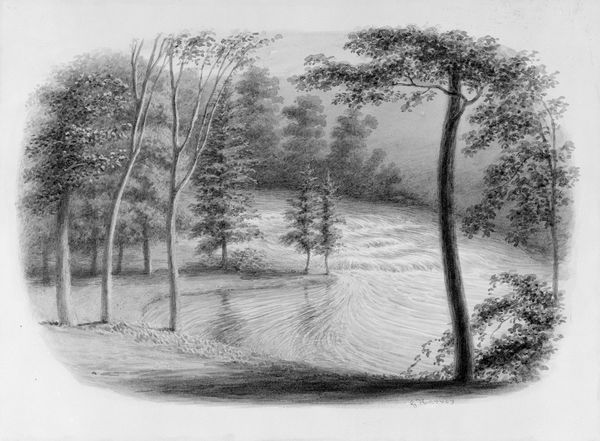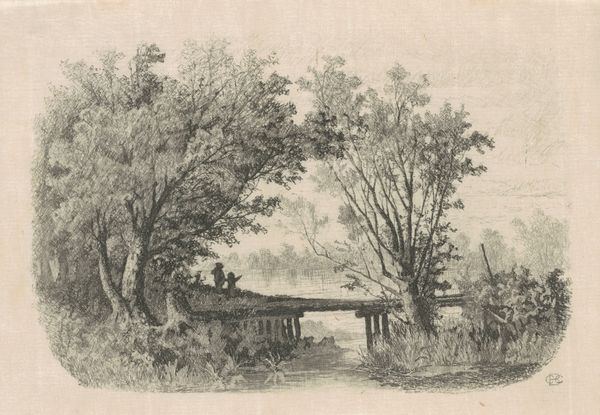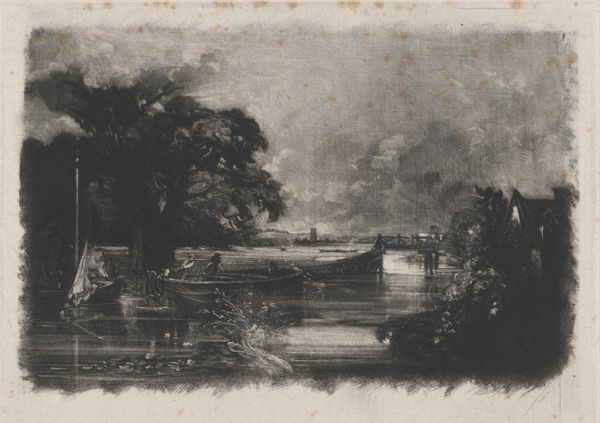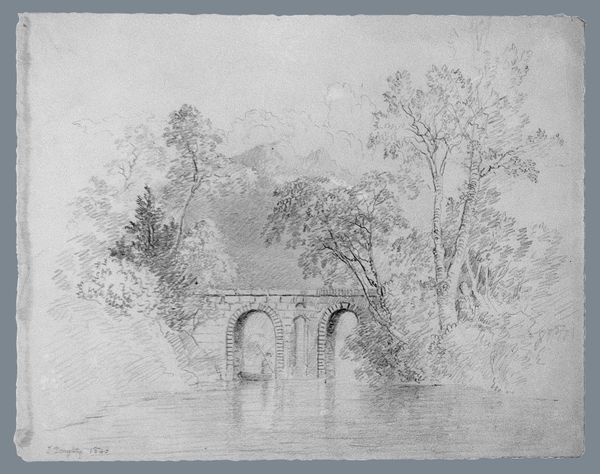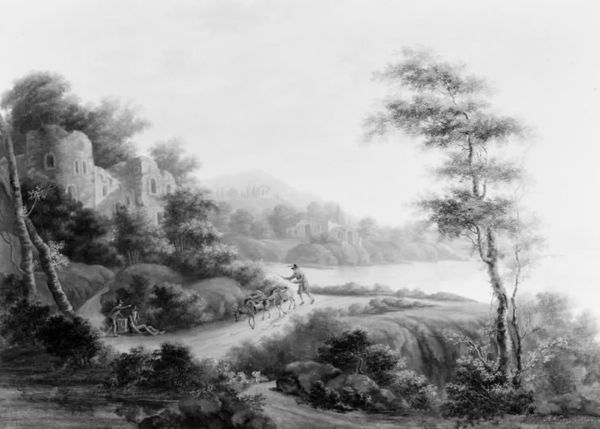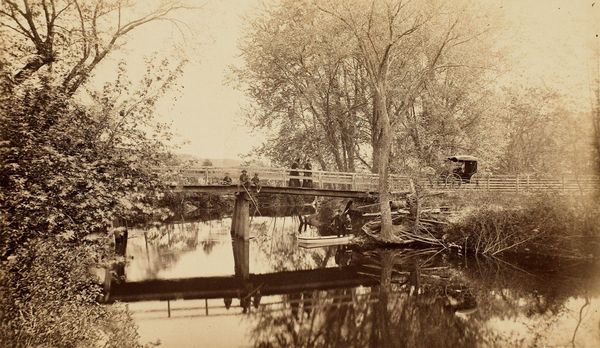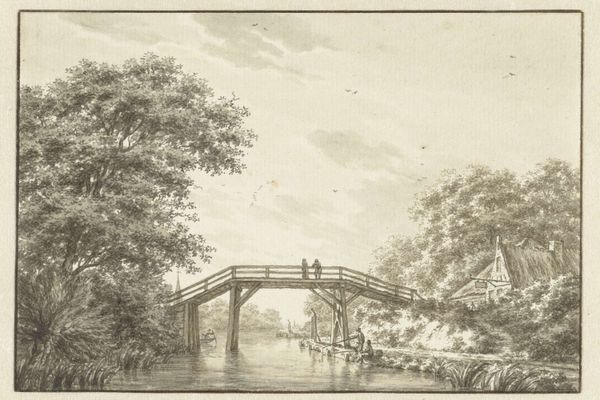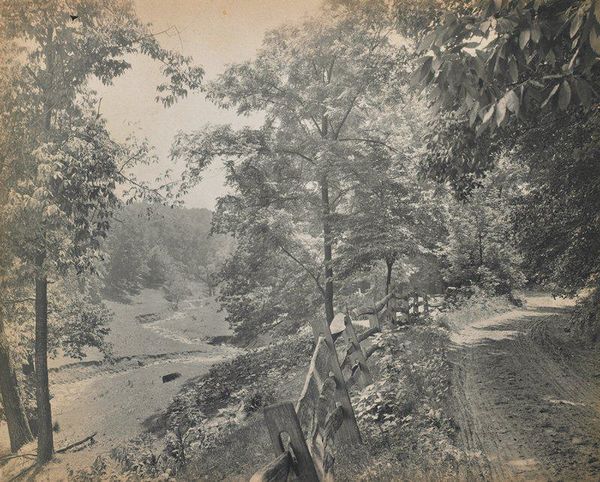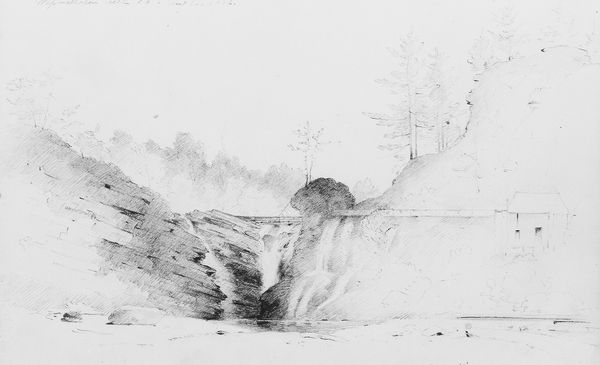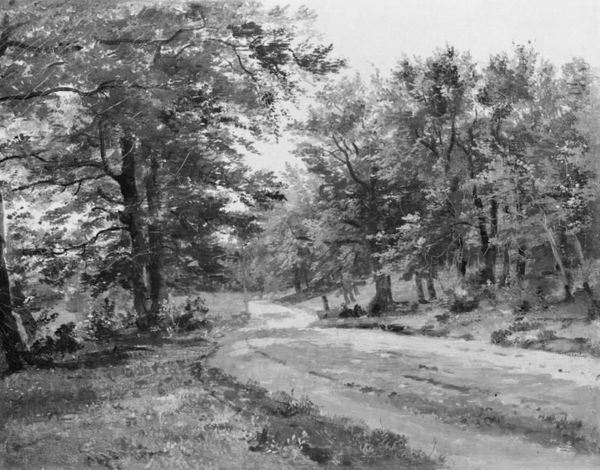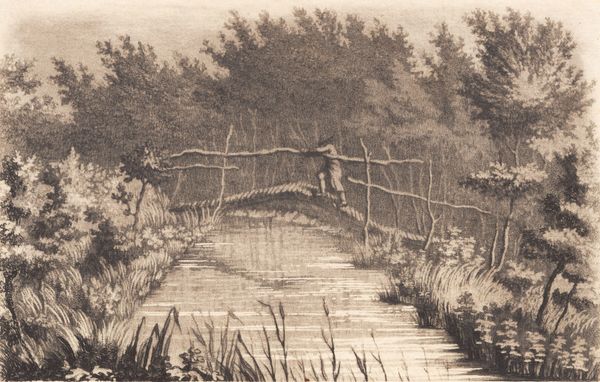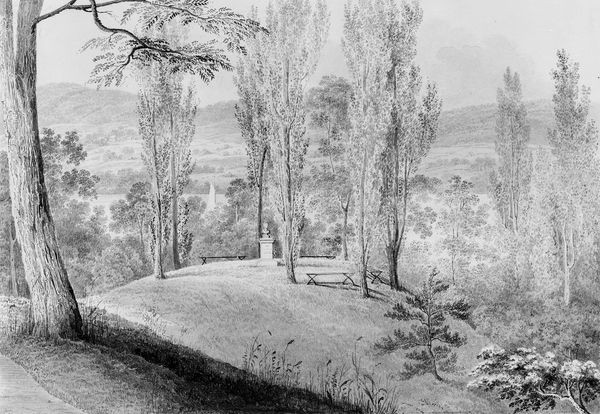
Bridge over Crumelbow Creek, David Hosack Estate, Hyde Park, New York (from Hosack Album) 1829 - 1832
0:00
0:00
drawing, ink, pencil
#
drawing
#
landscape
#
ink
#
romanticism
#
pencil
#
line
#
cityscape
Dimensions: 5 13/16 x 7 1/2 in. (14.8 x 19.1 cm)
Copyright: Public Domain
Curator: Looking at this delicate rendering in ink and pencil, we have "Bridge over Crumelbow Creek, David Hosack Estate, Hyde Park, New York" from the years 1829 to 1832, created by Thomas Kelah Wharton. What’s your initial impression? Editor: Serene. A quiet, almost ethereal scene. The textures are so finely rendered, you can almost feel the stillness of the water and the gentle rustle of leaves. Curator: Indeed. It captures the essence of Romanticism's appreciation for nature and the picturesque landscape. David Hosack, the estate owner, was a prominent physician and botanist. He likely commissioned this to showcase the cultivated beauty of his land. These images often served to project status. Editor: It's interesting to think about the labor involved. The pencil strokes mimicking the grain of the wooden bridge, the repetitive dabbing suggesting foliage. Was Wharton local to the estate or an itinerant artist commissioned specifically? And who maintained these cultivated landscapes—who were the laborers? Curator: Those are crucial questions! Artists like Wharton contributed to the visual culture that promoted an idealized vision of rural life. His art bolstered ideas of landowners shaping the land and influencing social life. Editor: Exactly. While the artwork offers a view of pastoral elegance, it also silently carries an understanding of class division in nineteenth-century America. Consider the materiality—the deliberate act of drawing. This medium offered accessibility, in terms of price and material production. Curator: That's astute. Wharton’s careful attention to detail elevated the medium beyond simple topography, endowing the scene with an aura of timelessness. It's about presenting an image, a lifestyle available for a wealthy few, promoted through visual documentation. Editor: By studying the material choices and the social conditions of its creation, it makes the image’s message all the more resonant—the leisure is paid for by an economic class, working. Curator: Absolutely, we can then delve into how these visuals circulate and perpetuate specific social constructs, through exhibitions, publications and the collections. Editor: Viewing it this way creates an honest connection to the artwork’s complex narrative. Thanks for that additional insight! Curator: And to you! Thinking about the artistic and social dimensions really breathes more life into understanding artwork in history.
Comments
No comments
Be the first to comment and join the conversation on the ultimate creative platform.
